The Seagate 600 & 600 Pro SSD Review
by Anand Lal Shimpi on May 7, 2013 8:00 AM ESTThe Seagate 600/600 Pro
Both the Seagate 600 and 600 Pro are 2.5” SATA drives. Their enclosures are completely screw-less, which makes getting in a bit of a pain but it’s not impossible. The 600 is available in 7mm and 5mm thicknesses, the latter is something we’ve only recently seen with Western Digital’s UltraSlim drive announcement. The 600 Pro is only available in a 7mm form factor.
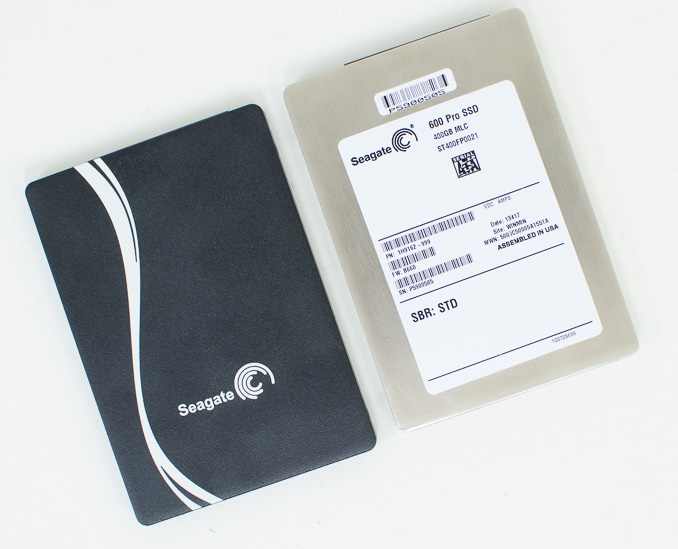
Seagate 600 (left) vs. Seagate 600 Pro (right)
All 600/600 Pro designs that I’ve seen thus far use single-sided PCBs and 8 NAND devices. Seagate simply varies the number of NAND die per package to hit various capacity points.
Seagate 600
The Seagate 600 is available in 120GB, 240GB and 480GB capacities using 128GB, 256GB and 512GB of NAND, respectively. All of those drives have 8 NAND devices, and 2, 4 and 8 19nm NAND die per package, respectively.
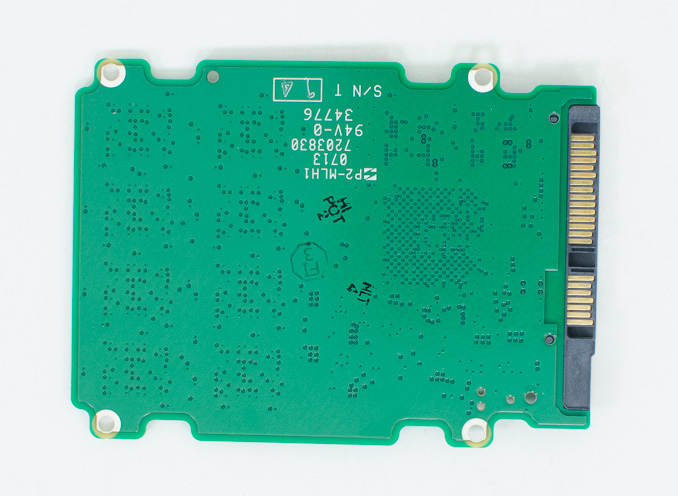
480GB Seagate 600 (back)
The 600 Pro is available in the same capacities, but adds 100GB, 200GB and 400GB versions as well. The 200/400GB 600 Pros have 128/256/512GB of NAND, but are over provisioned to give the controller more spare area to work with. I like the idea of setting aside more spare area for the Pro drive, but the fact that not all 600 Pros are configured this way is bound to be confusing to customers.
Seagate 600 Pro
Other than the availability of heavily over provisioned drives, the 600 Pro also separates itself from the client-focused Seagate 600 by including an array of capacitors for power loss protection. In the event of unexpected power loss Seagate expects the 600 Pro will be able to commit all data received by the LM8780 controller to NAND.
The 600 carries a 3 year warranty and is rated for up to 40GB of writes per day throughout that warranty period (the 120GB model is rated for 20GB of writes per day). The 600 Pro uses better binned NAND and boasts higher endurance over the course of its longer 5 year warranty. As is typically the case with SSDs, endurance tends not to be an issue for client usage - in the enterprise whether or not you can get by with the 600 or need the 600 Pro really depends on your workload.
Seagate isn’t announcing pricing other than to say that the 600/600 Pro will be priced inline with competing drives.


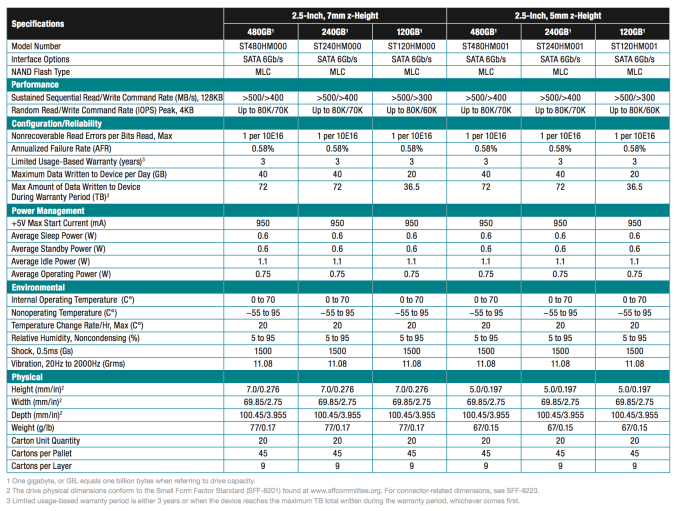

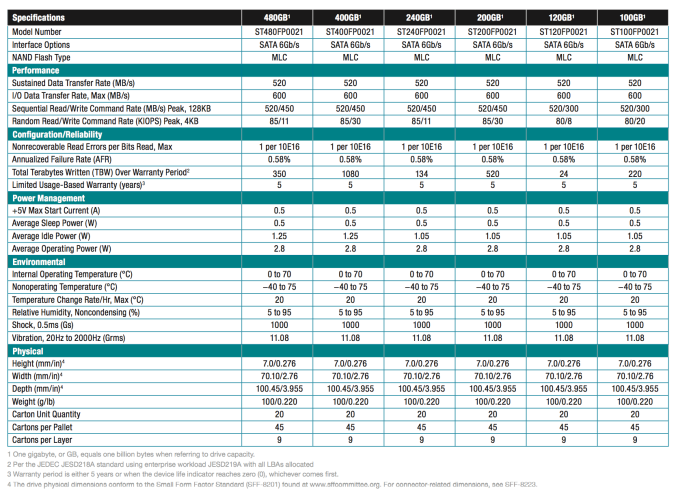
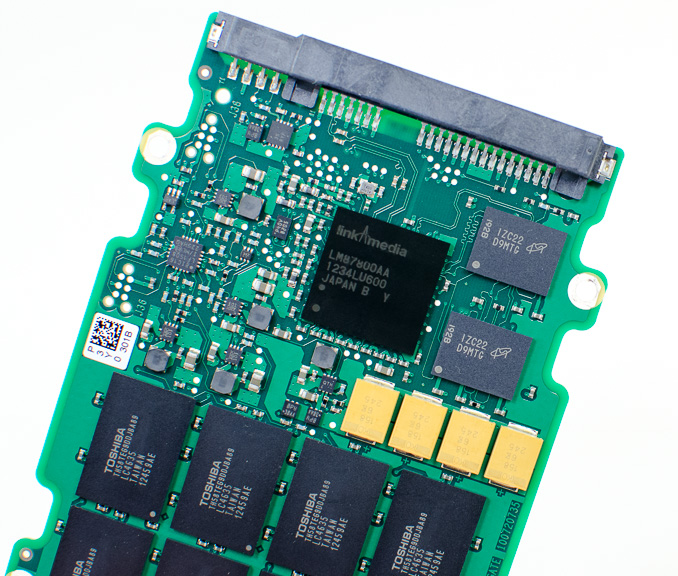














59 Comments
View All Comments
StealthGhost - Wednesday, May 8, 2013 - link
To me it was always just that HDDs are vastly different than SSDs. Making SSDs when you make HDDs is like starting from scratch almost. That is why the most random companies are making SSDs, because they made flash storage before. Corsair, OCZ, Crucial harddrives? I've owned RAM from all 3 but never a harddrive, but it makes sense for them to side step over from RAM to SSD, not so much for WD to go all the way down and then back up over to SSD.I hope WD becomes a big name in SSDs though, I have 5 WD harddrives that I can think of off the top of my head and one is from 2003. As you can tell, they're my favorite HDD manufacturer.
phillyry - Sunday, May 12, 2013 - link
Cactusdog, "I don't understand why Seagate and WD were so slow in the SSD market."Because they didn't want to destroy their reputations with a the shenanigans that was going on in the first couple gens of SSDs. They wisely waited until the tech was mature so that their multibillion dollar reputations wouldn't go down the drain.
Tams80 - Tuesday, May 7, 2013 - link
Same. I think around 500GB is the minimum I'd prepared to go with (for a laptop/mobile computer). They are still a bit too pricey and from my experience the hybrid drives, while good, aren't really worth it. 1TB would be great, but that will probably require waiting a few years.The 840 Pro looks to still be the best, but yes, it's still far too expensive for me. =(
klmccaughey - Tuesday, May 7, 2013 - link
The 240GB non Pro 840 is pretty good unless you are doing a lot of writing - very well priced.I have a 2TB HD and a 256GB Steam drive. With Steam Tool / or caching software that is plenty. My C drive is 2 x 128GB Vertex 3's in Raid 0.
Don't wait to switch! Just get what you can and add more when you can - you will never look back :)
MrSpadge - Tuesday, May 7, 2013 - link
Yeah.. just make smart use of the space you've got and you should be able to get by with much smaller SSDs than 500 GB. Personally using 64 GB to cache my 3 TB HDD - fast enough for me :)phillyry - Sunday, May 12, 2013 - link
The OP is talking about a mobile computer (laptop), not a desktop solution where you can have additional hard drives.creed3020 - Tuesday, May 7, 2013 - link
Seagate may be late to the game but wow what an entrance! Going with the LM87800 almost guaranteed a strong performer as we already know from the Corsair Neutron's history. Their own special sauce added to the firmware shows that they are taking this market seriously.The HDD manufacturers, glorious duopoly and all, need to see the writing on the wall and get some products into this market vertical. There will be a need for spinning platters for years to come still as 4TB SSDs are still a good ways out.
I'm currently on the fence for a Samsung 840 500GB but this announcement I need to wait and see how the reliability on these drives pans out as this may be the better choice.
Oxford Guy - Wednesday, May 8, 2013 - link
MLC drives are generally going to be more reliable than TLC drives, unless you're dealing with firmware bugs (like the horribly buggy 1st generation Sandforce controller in the Vertex 2e)name99 - Wednesday, May 8, 2013 - link
"Seagate may be late to the game but wow what an entrance!"To me this is in the interesting point. Presumably Seagate are interested in surviving for more than the next five years. Which means they have to be in the broadly defined storage business, not just the HD business. Which in turn means: raises the question --- presumably they want to be the equivalent in the flash business of their role in the HD business?
What would that take? If they were doing it seriously, it would take
(a) own the controller. It seems they already own the firmware. Perhaps they don't care much about the LAMD/Hynix link because the next step is to design their own controller?
(b) fab the flash. Until they do that, as has been said, they're just one of a dozen assemblers. Of course fabbing flash is not a completely trivial business to get into... So --- buy Hynix (or someone else)? Or not the whole company, but at least the flash division? I suspect we will see something like this.
If they DO own the firmware, the chip, and the flash, they are at least in a rather better position.
They can start to apply real engineering to these devices in a way we haven't yet seen, most obviously in much better power performance, both idle power and peak random writes power. There may also be scope for other innovations once you own the entire pipeline, for example you can tweak the flash being fabbed for a more precise set of specs, or you can drive it to tend to certain (known) failure modes which your firmware is set up to work around.
JellyRoll - Tuesday, May 7, 2013 - link
Corsair recently released new versions of the Neutrons with a die shrink, are these Neutrons compared in the article with the new NAND?